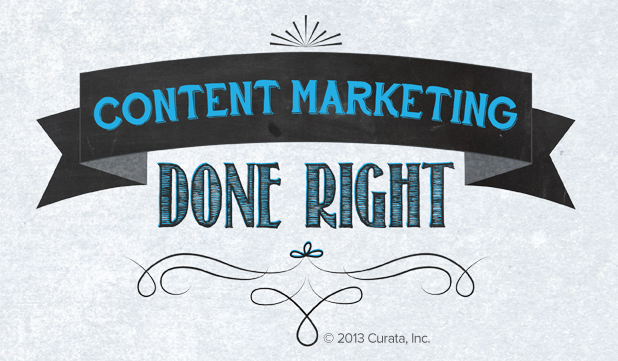- Share What Marketers Need to Know About Ethical Curation, Part 1 on Facebook
- Share What Marketers Need to Know About Ethical Curation, Part 1 on Twitter
- Share What Marketers Need to Know About Ethical Curation, Part 1 on Linkedin
- Share What Marketers Need to Know About Ethical Curation, Part 1 via email
 With the huge popularity of content marketing, many brands are turning to content curation to help them keep their blogs and social media feeds updated with a steady stream of fresh, relevant content. While content curation can be done in an ethical manner that creates value for readers and shows respect for the original creator, poorly executed curation can lead to piracy or copyright issues.
With the huge popularity of content marketing, many brands are turning to content curation to help them keep their blogs and social media feeds updated with a steady stream of fresh, relevant content. While content curation can be done in an ethical manner that creates value for readers and shows respect for the original creator, poorly executed curation can lead to piracy or copyright issues.
Here at Curata, we’ve been working on a guide to ethical curation to help marketers understand the differences between content aggregation and curation and how they can curate content in the most ethical manner possible.
Before we can curate ethically, we need to understand the differences between content aggregation, curation, and creation.
- Content aggregation is the act of sharing content on a similar topic. This provides a high-level overview of what’s going on in the online world related to that topic, but it provides no additional value or context for the reader. Tools like Google Alerts provide aggregation services. Aggregation is done primarily by a machine or a software technology, and it may or may not factor in the quality of sourcing.
- Content curation is the process of finding, organizing, annotating, and sharing the most relevant and high-quality content on a specific topic for a target market. Effective curation requires a human to select content based on the credibility of the source and the quality of the content itself. The human curator also adds value by giving his or her own commentary on the topic or issue rather than simply regurgitating what someone else wrote.
- Content creation is when an author, illustrator, researcher or other creator produces an original work. Content creation is an important part of the content marketing process, allowing individuals or organizations the ability to share their point of view about a topic.
And here’s a quick overview of copyright law (consult your attorney for specific questions).
Unlike patents and other forms of intellectual property protection, an author doesn’t have to apply for copyright. Authors are protected under US Copyright Law as soon as they create an original work and they don’t need to have a copyright mark (©) next to that work for it to be protected. Just because you don’t see a copyright notice on an image or a piece of text doesn’t mean it’s acceptable to produce that content on your blog or website.
Among other rights, 17 U.S.C.A §106 entitles a copyright owner to:
- Reproduce the copyrighted work in copies or phonorecords (sound recordings)
- Prepare derivative works based upon copyrighted work
- Distribute copies or phonorecords of the copyrighted work to the public by sale or other transfer of ownership, or by rental, lease, or lending
Copyright protections are broad, but they do allow the public to use parts of copyrighted works under what’s called fair use. The Fair Use Statute opens the door to content curation. In particular, the 1961 Report of the Register of Copyrights on the General Revision of the U.S. Copyright Law has designated certain uses of copyrighted content that are regarded as fair use. These include:
- Quotation of excerpts in a review or criticism for purposes of illustration or comment
- Quotation of short passages in a scholarly or technical work, for illustration or clarification of the author’s observations
- Use in a parody of some of the content of the work parodied
- Summary of an address or article, with brief quotations, in a news report
The distinction between fair use and copyright infringement is not always clear or easily defined. There is no specific number of words, lines, or notes that may safely be taken without permission. That’s why it’s a good idea to infuse your content curation with creation, too. In other words, rather than simply summarizing or restating what the original content creator said, dive deeper into the topic by giving your own opinion, adding context or examples, or offering a different take on the topic.
For more on ethical curation, download Content Marketing Done Right: Curata’s Definitive Guide to Executing an Ethical Content Curation Strategy.
In Part 2 of this series, we’ll look at specific best practices for ethical curation. Keep your eyes peeled for Part 2 to be posted next week.







